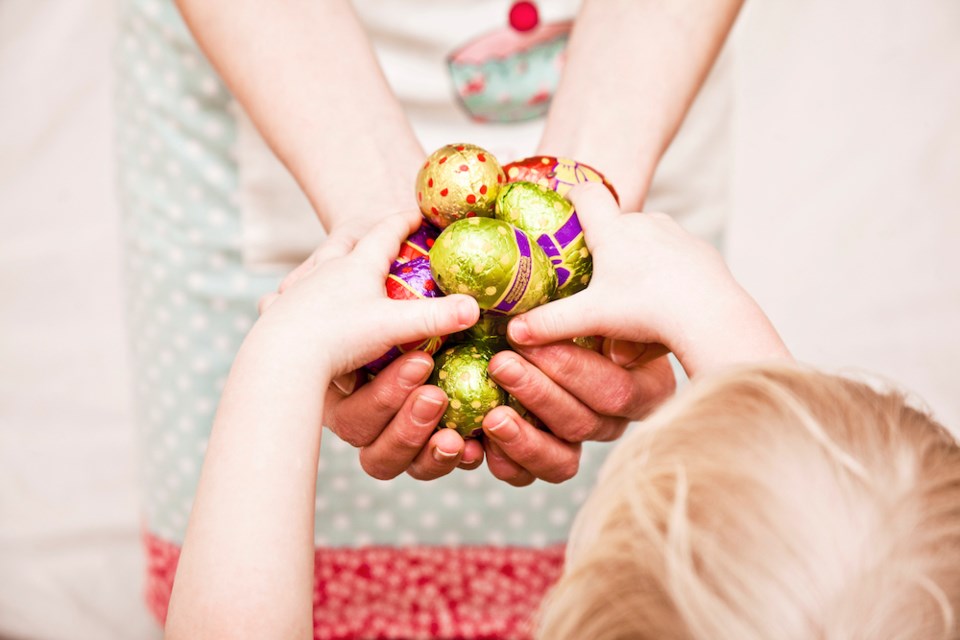Letting your children eat all the Halloween candy or Easter chocolate they want goes against generations of parenting.
It's a parent's job to restrict "forbidden foods," is it not?
That may be the parenting choice for many but Fraser Health's dietitians support a new concept, called "division of responsibility" when it comes to food.
In this paradigm, children have some choice in making some of their food decisions.
"It’s a newer way than we’ve been taught about where chocolate or sugary treats do fit within a balanced diet," said Dr. Ariella Zbar, a medical health officer with Fraser Health.
Dr. Zbar said new theories tested by the Ellyn Satter Institute have found that issues with food can start young with too much "moral judgment" attached to some foods.
"There has been a lot of cultural shifts underway at how we look at different types of food — when to eat, what to eat," said Dr. Zbar.
No more "good foods" and "bad foods
The idea that children can have some control over the food they eat and that food should be "neutral" of emotional baggage has been included in the B.C. school curriculum on healthy eating.
As well, B.C. Health Link promotes the division of responsibility on its website as a way of ending food battles with children.
It may be challenging for parents who have been raised to prefer "good foods" over "bad foods" to understand that food doesn't have any moral qualities.
However, Dr. Zbar said B.C.'s dietitians are promoting this idea because they want to foster healthier attitudes about food that don't result in binging, over eating or restricting food intake disorder.
"There are obviously food nutrition differences between a chocolate or a carrot or an apple. It’s about not ascribing moral judgment to children who choose one food over another," said Dr. Zbar.
"We really want to get caregivers, parents and children responding to a child’s internal food cues. They are able to do that as infants. We want to continue that into childhood and adulthood."
Here's how division of responsibility works:
According to Fraser Health both adults and children have roles and responsibility when it comes to eating and oral health.
The adult decides the what, when and where of meals and snacks, and the child decides how much and whether to eat. The adult decides when to let them have the chocolate or candy and the child decides how much.
There is no “right” amount, with the goal being to teach everyone to be able to regulate themselves.
"Managing or depriving children of sweets, like chocolate or candy, makes them want them even more, as they become 'forbidden foods.' The thinking is, when children view chocolate and candy as simply another food that will be available in the future, the novelty will soon wear off," Fraser Health says.
Still, oral care is important after children eat the sweets: Parents are responsible for providing their children with oral care, including helping kids with brushing and flossing until they are at least eight years old.
"Making sure they are brushing their teeth, reminding them to do it, setting timers, checking they’ve been brushing property with fluoride toothpaste," are among Dr. Zbar's recommendations.
How to deal with Easter, Halloween candy:
- Continue to offer regular meals and snacks in addition to any chocolate or candy that is offered.
- Offer chocolate and candy without any strings attached, i.e., as a reward or a bargaining tool.
- Take a neutral stance by not labelling chocolate or candy as bad food, as this creates added desire.
- Remember to brush your child’s teeth for them in the morning and before they go to bed with fluoride toothpaste.




